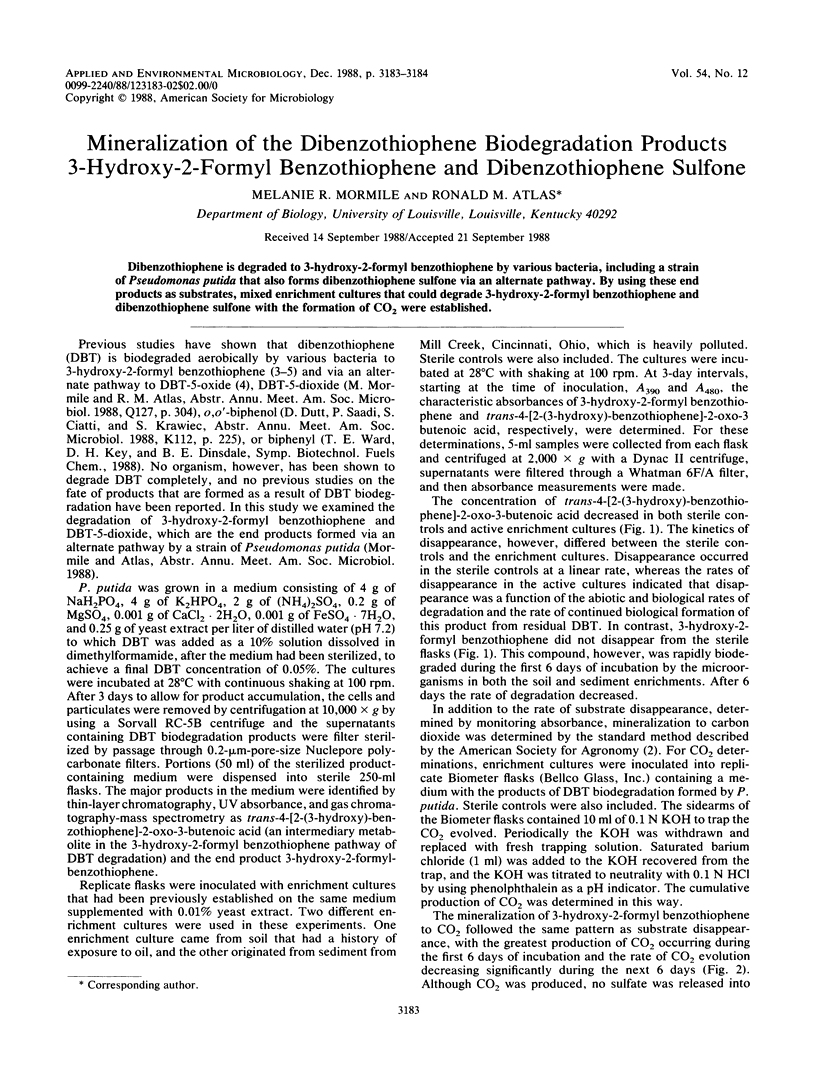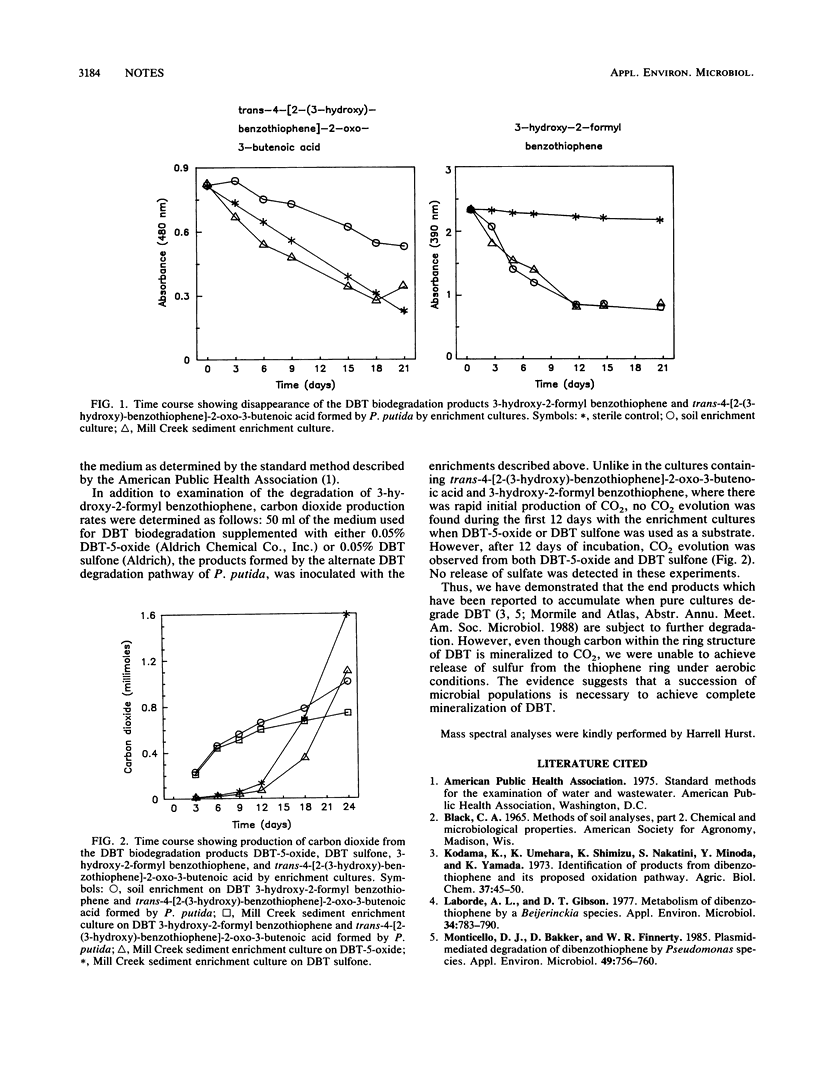Abstract
Dibenzothiophene is degraded to 3-hydroxy-2-formyl benzothiophene by various bacteria, including a strain of Pseudomonas putida that also forms dibenzothiophene sulfone via an alternate pathway. By using these end products as substrates, mixed enrichment cultures that could degrade 3-hydroxy-2-formyl benzothiophene and dibenzothiophene sulfone with the formation of CO2 were established.
Full text
PDF

Selected References
These references are in PubMed. This may not be the complete list of references from this article.
- Laborde A. L., Gibson D. T. Metabolism of dibenzothiophene by a Beijerinckia species. Appl Environ Microbiol. 1977 Dec;34(6):783–790. doi: 10.1128/aem.34.6.783-790.1977. [DOI] [PMC free article] [PubMed] [Google Scholar]
- Monticello D. J., Bakker D., Finnerty W. R. Plasmid-mediated degradation of dibenzothiophene by Pseudomonas species. Appl Environ Microbiol. 1985 Apr;49(4):756–760. doi: 10.1128/aem.49.4.756-760.1985. [DOI] [PMC free article] [PubMed] [Google Scholar]


